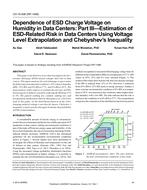Indoor thermal comfort depends on the operative temperature, which is a function of the dry-bulb air temperature and the mean radiant temperature. For maximum comfort, an optimum combination of these temperatures is necessary, because each of them independently affects the heat losses (gains) and thus the energy and exergy demand of the building. Therefore, especially in high-performing sustainable buildings both temperatures need to be separately and optimally controlled for higher energy and exergy efficiencies. Another optimality condition arises due to the exergy loss from the human body, which needs to be minimized. Consequently, air exergy, radiant exergy of the enclosing surfaces, and human body exergy loss become dominant factors for finding the right balance between the comfort and efficiency of a building. The problem becomes more complex when the latent cooling loads are also considered. This study establishes a fundamental relationship among thermal comfort, exergetic comfort, energy, and exergy efficiency and introduces a new optimization algorithm. Results show that calculation of air exergy and radiant exergy is an important step to determine the optimum split of air temperature (drybulb) and mean radiant temperature, while minimum human body exergy loss provides the most comprehensive condition for the operative temperature. Sample calculations based on Rational Exergy Management Model (REMM) show that substantial energy savings may be achieved with minimum carbon footprint while human exergy loss is optimized for better comfort during heating and cooling seasons.
Citation: ASHRAE Conference Papers, 2010, vol. 116, pt. 2, Albuquerque, NM
Product Details
- Published:
- 2010
- Number of Pages:
- 10
- File Size:
- 1 file , 600 KB
- Product Code(s):
- D-AB-10-C011


